#neters
Quote
To conform with the true meaning of the symbol in ancient Egypt, we ought to use the Egyptian term Medu-Neteru, the Greek translation of which, ‘hieroglyphs,’ distorts the Egyptian meaning. Medu-Neteru are the Neters, or the principles conveyed by a sign.
R.A. Schwaller de Lubicz, The Temple in Man
#Quotes#Wisdom#R.A. Schwaller de Lubicz#The Temple in Man#Ancient Egypt#Medu-Neteru#Neters#Hieroglyphs
20 notes
·
View notes
Photo

The Ba (Soul) joining the “Shining Ones” or Neters....
2 notes
·
View notes
Text
#SoulCollage#Neters#Lisa Handley#SoulCollage® Evolving#Art and Soul#Expanding Our Interaction with Images
0 notes
Note
Honestly I’m so happy you chose a less common ship for Peter for LoF. Reading so many stories with Peter paired up with MJ , Gwen, & Harry get stale after awhile. I’ve only ever read, like, two other Ned/Peter fics? I really appreciate that you branched out
i love a good rare pair (Ned is a severely underrated character and I adore him so much)
#erinwantstowrite#ao3#ao3 fanfic#leap of faith ao3#leap of faith catch me if you can#leap of faith#peter parker#ned leeds#peter parker/ned leeds#ped?#...neter?
94 notes
·
View notes
Text





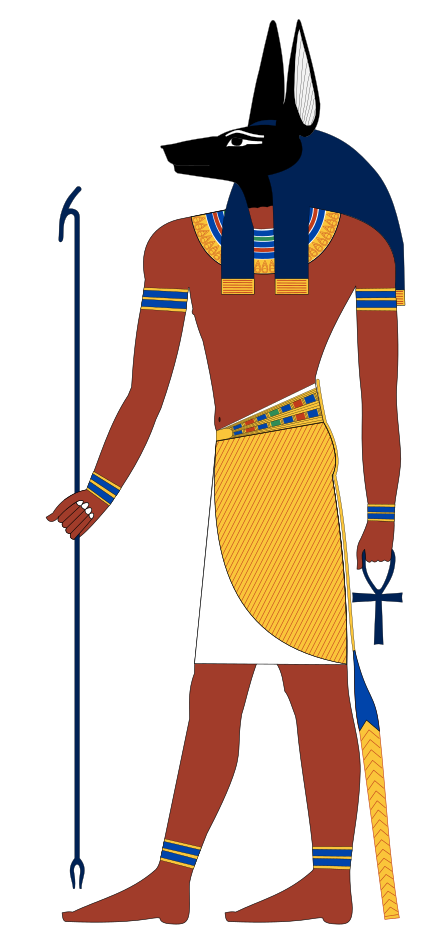
Anpu/Anubis
Other names:Ἄνουβις, Inpu, Inpw, Jnpw, Anpu, ⲁⲛⲟⲩⲡ
Major cult center:Lycopolis, Cynopolis
Domain:Judgment Halls of Duat
Symbol:mummy gauze, jackal, flail, nwA or nwt blade tool, Seated dog, Wadjet eye, Sekhem scepter, imy-wt a fetish of leopard skin hung from a pole often made of wood and set before the kings throne
Parents:Nepthys and Set, Osiris (Middle and New kingdom) or Ra (Old kingdom). His fourth son
Alternative parentage:Ra and Hesat (early manifestation of hathor), Set and Nephytys, Nephytys and Ra, Bastet
Siblings:Wepwawet, Horus (step brother when osiris and isis are parents), Anput sister (when parents are Set and Nephytys, Bata (in the tale of the two brothers)
Consort:Anput, Nephthys
Offspring:Kebechet, Wapwawet (sometimes) son, Ammut (sometimes) daughter
Greek equivalent:Hades or Hermes
Roles:Master embalmer, Inventor of embalming, Cheif physician, Watcher, Guardian of the dead, Phychopomp 'guide of souls', Master of the scales in the Hall of Amunety, Naturr god of twilight and dawn, Tribunal of Wesir, Sirius star, Personification of the summer solstice
Hybrid gods:Hermanubis/hermes anubis
Connection to other gods:Hermes (roman), Cerberus (parents echidna and typhon), Garmr or Garm (norsr) rag (old norse), Nibhaz (hebrew)
Anubis is the god of death(psychopomp), mummification, embalming, the afterlife, cemeteries, tombs, and the Underworld, in ancient Egyptian religion, usually depicted as a canine or a man with a canine head.
Like many ancient Egyptian deities, Anubis assumed different roles in various contexts. Depicted as a protector of graves as early as the First Dynasty (c. 3100 – c. 2890 BC), Anubis was also an embalmer. By the Middle Kingdom (c. 2055–1650 BC) he was replaced by Osiris in his role as lord of the underworld. One of his prominent roles was as a god who ushered souls into the afterlife. He attended the weighing scale during the "Weighing of the Heart", in which it was determined whether a soul would be allowed to enter the realm of the dead. Anubis is one of the most frequently depicted and mentioned gods in the Egyptian pantheon, however, no relevant myth involved him.
Anubis was depicted in black, a color that symbolized regeneration, life, the soil of the Nile River, and the discoloration of the corpse after embalming. Anubis is associated with his brother Wepwawet, another Egyptian god portrayed with a dog's head or in canine form, but with grey or white fur. Historians assume that the two figures were eventually combined. Anubis' female counterpart is Anput. His daughter is the serpent goddess Kebechet.
Roles
Embalmer
As jmy-wt (Imiut or the Imiut fetish) "He who is in the place of embalming", Anubis was associated with mummification. He was also called ḫnty zḥ-nṯr "He who presides over the god's booth", in which "booth" could refer either to the place where embalming was carried out or the pharaoh's burial chamber.
In the Osiris myth, Anubis helped Isis to embalm Osiris. Indeed, when the Osiris myth emerged, it was said that after Osiris had been killed by Set, Osiris's organs were given to Anubis as a gift. With this connection, Anubis became the patron god of embalmers; during the rites of mummification, illustrations from the Book of the Dead often show a wolf-mask-wearing priest supporting the upright mummy.
Protector of tombs
Anubis was a protector of graves and cemeteries. Several epithets attached to his name in Egyptian texts and inscriptions referred to that role. Khenty-Amentiu, which means "foremost of the westerners" and was also the name of a different canine funerary god, alluded to his protecting function because the dead were usually buried on the west bank of the Nile.He took other names in connection with his funerary role, such as tpy-ḏw.f (Tepy-djuef) "He who is upon his mountain" (i.e. keeping guard over tombs from above) and nb-t3-ḏsr (Neb-ta-djeser) "Lord of the sacred land", which designates him as a god of the desert necropolis.
The Jumilhac papyrus recounts another tale where Anubis protected the body of Osiris from Set. Set attempted to attack the body of Osiris by transforming himself into a leopard. Anubis stopped and subdued Set, however, and he branded Set's skin with a hot iron rod. Anubis then flayed Set and wore his skin as a warning against bad people who would desecrate the tombs of the dead.Priests who attended to the dead wore leopard skin in order to commemorate Anubis' victory over Set. The legend of Anubis branding the hide of Set in leopard form was used to explain how the leopard got its spots.
Most ancient tombs had prayers to Anubis carved on them.
Weigher of Hearts
One of the roles of Anubis was as the "Guardian of the Scales."The critical scene depicting the weighing of the heart, in the Book of the Dead, shows Anubis performing a measurement that determined whether the person was worthy of entering the realm of the dead (the underworld, known as Duat). By weighing the heart of a deceased person against Ma'at (or "truth"), who was often represented as an ostrich feather, Anubis dictated the fate of souls. Souls heavier than a feather would be devoured by Ammit, and souls lighter than a feather would ascend to a heavenly existence.

Anput
Symbols:jackal, canopic jars, mummy gauze
Consort:Anubis
Offspring:Kebechet
Anput is a goddess in ancient Egyptian religion. Her name is written in hieroglyphs as jnpwt (reconstructed in Middle Egyptian as /ʔan.ˈpa.wat/ or /jan.ˈpa.wat/).In English, her name also is rendered as Anupet, Input, Inpewt, and Yineput. As the female counterpart of her husband, Anubis, who was known as jnpw to the Egyptians, Anput's name ends in a feminine "t" suffix when seen as jnpwt.
Draconian
Draconian-Egyptian Grimoire-Asenath Mason
Anpu, also known as Anubis in Greek, was the original Egyptian Lord of the Dead before the death of Asar (Osiris) that occurred with the rise of the Asar cult. As the stories go, Anpu vacated the spot as a sign of respect for Asar, and became the lord of the embalming process, funerals, graveyards, the weighing of the soul in the hall of Amenti, and ferrying the souls into the land of the dead. Highly shamanic, Anpu is a guide that can help us find the correct path when we seek his wisdom. Different myths have different lineages associated with them, but the oldest myths say he is a son of Ra. However, through the centuries his lineage changed several times, and drastically at that, as did his role as can be seen above. In his book "777," Aleister Crowley corresponds him to Hod on the Qabalistic tree of life, which is also where Mercury and Ilermes are placed, due to their psychopomp natures. However, since that was a later addition to the legend of Anpu, there would be a different Qabalistic correspondence for him that would correspond to our work. We will be working with him to guide us to deeper into the draconian mysteries of ancient Egypt that time has forgotten. We should also remember that the role of psychopomp attached to Anpu rose during the early Hermetic era, and didn't reflect earlier Egyptian periods and teachings.
──────⊰In Workings⊱──────
*Please know basic protections and energy work before attempting any deity work.*
*It is important to note that everyone's experiences are different and will work with spirits for different reasons. Some people may like a spirit while others will not and that's okay. Ask these spirits what they will work with you on as well as ask them if they can help you with whatever it is you need.*
Anubis had male priests who sported wood masks with the god's likeness when performing rituals. His cult center was at Cynopolis in Upper Egypt but memorials were built everywhere and he was universally revered in every part of the nation
Ideas for honoring and working with/worshiping Anpu/Anubis
Anubis being a psychopomp deity he can ensure dead loved ones safety in the afterlife. He can also protect the practitioner from harm. He may also be good help in necromancy.
Altar
Create an altar/sacred space for performing rituals and giving offerings to Anpu/Anubis.
⬩An altar cloth
⬩Black and gold candles(you can use any color)
⬩Incense and an incense burner
⬩Offering bowl
⬩Statue of him or jackal
For more information on basic altar setups and deity work check out the deity work post.
Offerings:Antique keys, Bandages, Black coffee, Bones, Cinnamon , Feather, Frankincense, Hermatite, Phantom quartz, Puzzle boxes, Mastic/arabic gum/yemen gum (used in food and embalming), Myrrh, Pumpkin spice, Scales, Skulls, Smokey quarts, Vanilla,
Rituals
Ideas for rituals may include
For any ritual you are doing for Anubis you can wear a mask in his likeness. Ideas for rituals may include calling him for
⬩Protection
⬩Helping the dead cross over
⬩Honoring the dead
⬩Honoring the life you have
⬩Funerary rites
⬩Necromancy
⬩you can ask him what he will work with you on⬩
Evocation to Anpu/Anubis(made by me)(credit my Tumblr if used)
Anpu/Anput, Protector of the dead.
Guide of souls, I call to you
Find no wickedness in me, I shall bring you truth
I ask for your protection, I ask for your guidance
Overseer of the dead, I ask your alliance
Please accept my offering, Dua Anpu
𓃣𓃦𓃢𓃥𓃥𓃥𓃥𓃥𓃥𓃥𓃥𓃥𓃥𓃥𓃢

For more content relating to other practices/religions or pantheons follow my main blog for updates.
If you have any more questions or wish to join a community feel free to join my 18+ discord server
Ask me anything on my blog
#Anpu#anpu#Anput#Anubis#Kemetism#occult#witchcraft#deity#witchblr#spirits#spirit#spirit work#spirituality#deity work#deity worship#Occultblr#occultblr#kemeticism#neterism#netjeru#neteru#kemetic#kemetic witch#kemetic pagan#kemetic paganism#pagan#pagan witch#paganism#occultism#kemetic polytheism
61 notes
·
View notes
Text

#all seeing eye#ancient egypt#ancient history#ancient Hemet#astrology#baphomet#black art#conspiracy#digital art#djehuti#dogon#egypt#extraterrestrials#heru#hinduism#magic#witchcraft#occultism#yoruba#yoga#tarot decks#tarot#symbolism#sumerian gods#spirituality#sons of god#neter#enter#sekhmet#sci-fi art
12 notes
·
View notes
Text

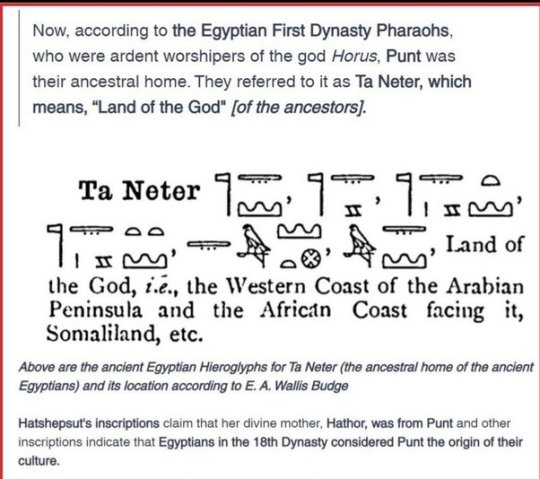
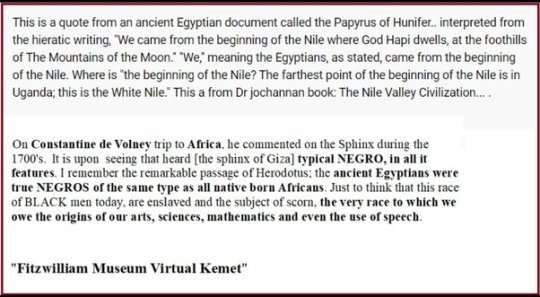




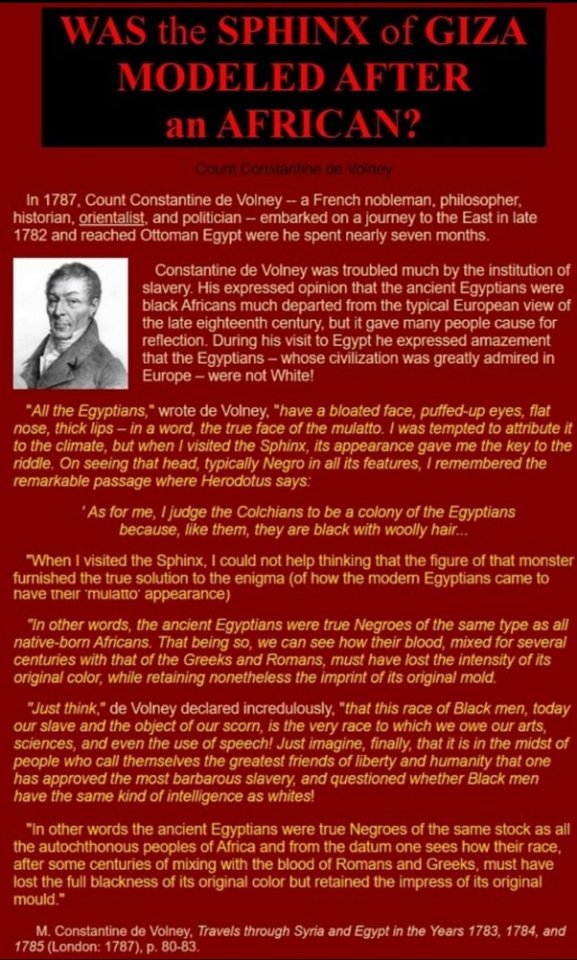

Mountains of the Moon is an ancient term referring to a legendary mountain or mountain range in east Africa at the source of the Nile River. Various identifications have been made in modern times, the Rwenzori Mountains of Uganda and the Democratic Republic of the Congo being the most celebrated.
Eventually, a merchant named Diogenes reported that he had traveled inland from Rhapta in East Africa for twenty-five days and had found the source of the Nile. He reported that it flowed from a group of massive mountains into a series of large lakes. He reported the natives called this range the Mountains of the Moon because of their snowcapped whiteness

When were the Indigenous Egyptians driven out of Egypt?
Many moved South (from where they originated in the first place) to as far as today's Tanzania and beyond, during the Arab conquest of the ancient Egypt and North Africa as a whole — in the 7th century CE; and some kept on gradually moving away to South thereafter, as the number of (modern) Arabs and other newcomers was increasing. A few of them however still remain to this day.
Now from the country being purely inhabited by these African people, to only a few of them remain today, it's amazing to realize how much racism and discrimination they endured for many years, which caused them to flee their motherland!
They originated from sub-Saharan East Africa, from Punt, the Land of the God, at the foothills of the Mountains of the Moon.

A brief history is: the ancient Egypt was inhabited by only these African people up until around the year 332 BCE when the first fair-skinned looking people — Macedonian Greeks started to migrate into the land. These Macedonian Greeks became Copt over 300 years later, in the First century CE. So there were no diverse populations before 332 BCE! The indigenous inhabitants were purely these Africans

#african#constatine de volney#constatine#egyptians#ancient egyptians#ancient kemet#ancient history#egypt#ta meri#kemetic dreams#romans#greeks#colchians#punt#land of the gods#ta netjer#ta neter#somalia
121 notes
·
View notes
Text
How to set up an altar
Are you ready to set up your altar? Whether you follow all of the Netjeru, multiple, singular, or none this will work for you.
First, clear off a space for your altar to be set up. I would recommend burning a candle or incense whilst you are doing this- something that brings you happiness and helps you clear your mind. Lavender or eucalyptus would work. However, that step isn’t necessary because it’s recommended that you first use smoke cleansing to clear your palette before you start setting up. Lavender, pine, mint, eucalyptus, cedar, frankincense and myrrh all have cleansing properties to them. If you are unable to use smoke to help, wiping it down with natural oils would also work- pine sol would be great for this.
Next, set it up how you want. If you want to put down an altar cloth, go ahead and lay that down now. Candles or an incense holder would work on top of this surface too. You can add in a burning dish as well, to burn any offerings you may give or any messages to those who you want to give one too. Along with any offering plate or a libation vessel you wish to use.
If you’re following all of the gods or none of them but still want an altar- I would set up imagery of the core principle of the religion- in this case, as a kemetic pagan, I would set up something to honor *maat*. If you’re honoring just your ancestors, put up an image of them.
Lay on the items that you’ve given to whoever, as an offering, and place them around the altar as you wish. This may include imagery, crystals, stuffed animals, divination tools, jewelry, and any other non-perishable item.
For food offerings, I would, personally, leave it on an offering plate that I have dedicated solely to them; however, this isn’t feasible for everybody so it’s not mandatory. As a kemetic pagan, you may leave your food on your altar, say a prayer or say graditute to the Neter, and, depending on what type of food you’re offering, you may consume it immediately or leave it there over night.
After you have finished setting up your altar, approach it with the intent of it becoming a place of protection, of love, of a safe space. Approach your altar with respect, ask whomever you are speaking to, to guide you and protect you, to provide you with infinite wisdom and resources. Use your manners and say thank you after asking them to give you a space that is safe to approach for rituals, for offerings, for talking.
7 notes
·
View notes
Photo

Afro Culture (My Culture)
@woobosco
#woods#woodstock#woo#Art World#wonderful#mature woman#nature#neter#woo bosco#woo gospel#woo life#woo tribal#wooski#african#african american#afrocentric#afro#afrofuturism#afrikaans#afrohair#Afro Culture#Afro Centric#afro curls#afro cuban#afro love#afro hippie#afro hippy#hippie#hippy#black hippie
10 notes
·
View notes
Video
youtube
Kush, Cuneiform and the Medu Neter
Mfundishi Jhutyms explains the history of the Medu Neter (Divine Word).
#Kush Cuneiform and the Medu Neter#medu neter#KMT#Kemet#Ausar Auset#Egyptian Spirituality#Egyptian History#Egypt
4 notes
·
View notes
Text
Ashra Kwesi Speaks on the Rosetta Stone, the Medu Neter and the Plunder of Kemet
youtube
Ashra Kwesi Speaks on the Rosetta Stone, the Medu Neter and the Plunder of Kemet
#Ashra Kwesi Speaks on the Rosetta Stone#the Medu Neter and the Plunder of Kemet#black history#ancient egypt#Rosetta Stone#Youtube
11 notes
·
View notes
Text
1921 Quantum Dara™ Domain Found anumyspace.com GOLD Economy [AGE] 4 1494 I.B. 1968 MICHAEL [IBM] of 1999 Y2K 2000-2023 quantumharrelltech.com... since eyeMSPACE.gov of ENQI [ME] NUDIMMUD's 2223 genspaceX.com Military @ 1921 QUANTUM 2023 HARRELL 2024 TECH 2025 Apple & IBM [A.i.] LLC of ATLANTIS [L.A.] 5000
IMMORTAL U.S. MILITARY KING SOLOMON-MICHAEL HARRELL, JR.™

i.b.monk [ibm] mode [i’m] tech [IT] cartel @ quantum harrell tech llc

OMMMMM EYE 1968 Y2K 1994 eyeMSPACE.com from 1921 quantumharrelltech.com of ATLANTIS5000.com

i.b. 1968 michael [ibm] from our interplanetary 9 [i9] ether sky future of atlantis5000.com

Eye ANU GOLDEN 9 Ether [iAGE] Underground Pentagon [UP] Agency @ 1921 QUANTUM 2023 HARRELL 2024 TECH 2025 Apple & IBM [A.i.] LLC of ATLANTIS [L.A.] 5000
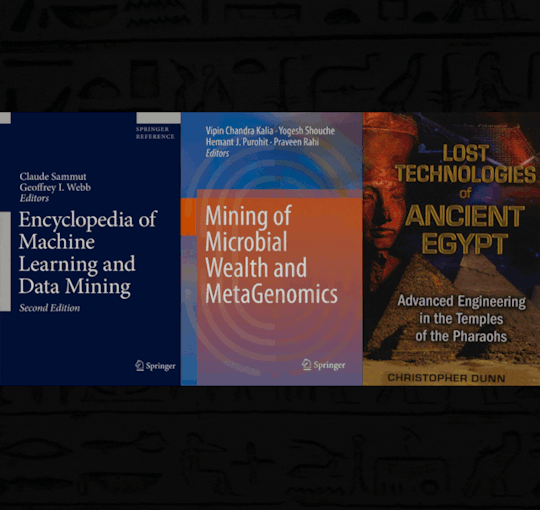
EYE MACHINE [I'M] LEARNING & DATA MINING ANUNNAQI [MA] ÆGIPTIAN [ME] GOLD PHARAOH @ 1921 QUANTUM 2023 HARRELL 2024 TECH 2025 Apple & IBM [A.i.] LLC of ATLANTIS [L.A.] 5000

EYE INNER DOMAIN [I.D.] WORLD OF AGHAARTA GOLD @ 1921 QUANTUM 2023 HARRELL 2024 TECH 2025 Apple & IBM [A.i.] LLC of ATLANTIS [L.A.] 5000

QUANTUM HARRELL TECH SKY KINGDOM DEEP UNDERNEATH MOTHER'S PACIFIC OCEAN
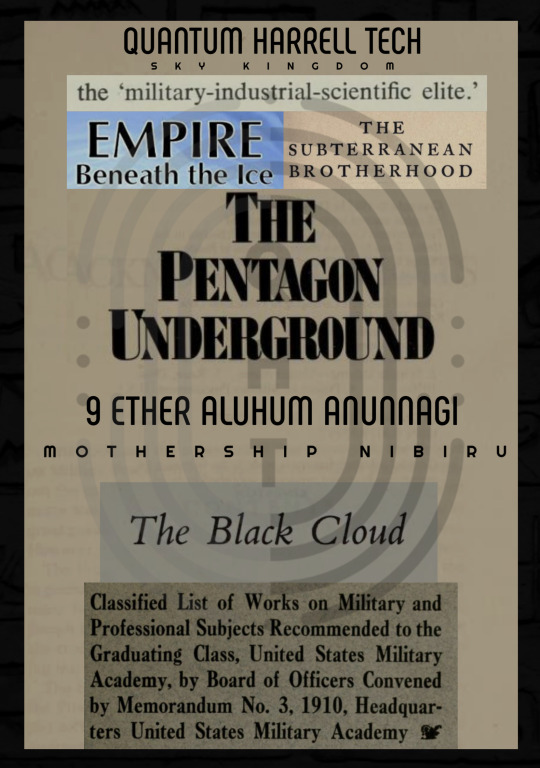
1968 9 ETHER SKY MILITARY UNDERGROUND [MU] HQ of 144,000 GEN X NIBIRUANS @ 1921 QUANTUM 2023 HARRELL 2024 TECH 2025 Apple & IBM [A.i.] LLC of ATLANTIS [L.A.] 5000

Apple's Inner [A.i.] Ear Listening [EL] AirPods SEE My QHT68 VISION PRO SOFTWARE @ 1921 QUANTUM 2023 HARRELL 2024 TECH 2025 Apple & IBM [A.i.] LLC of ATLANTIS [L.A.] 5000

EYE 144,000 CLANDESTINE 1921 BLACK WALL STREET BROTHERHOOD OF THE PENTAGON
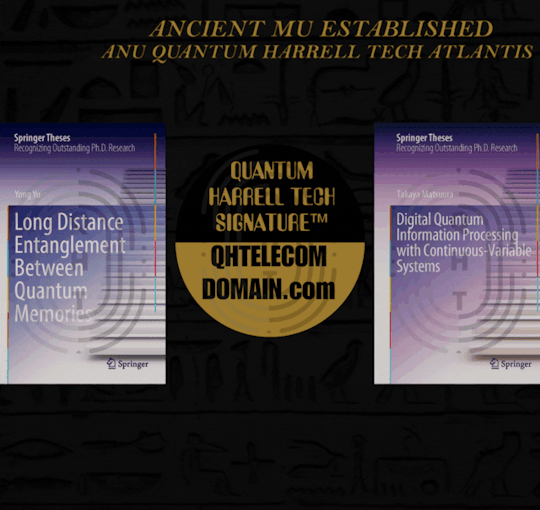
OMMMMM EYE 1968 MANSA [I'M] MUSA = THE GOLDEN BLACK BUDGET BROTHERHOOD @ 1921 QUANTUM 2023 HARRELL 2024 TECH 2025 Apple & IBM [A.i.] LLC of ATLANTIS [L.A.] 5000

QUANTUM HARRELL TECH SKY KINGDOM PREDATE YOU
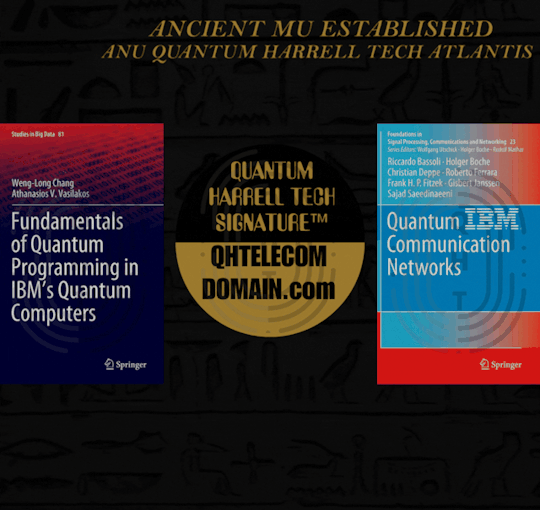
OMMMMM

2223 genspaceX.com watching harrelltut on Tumblr

NANO NANO... NANOTECHNOLOGY SIGNATURE OF QUANTUM HARRELL TECH CHAOS

Quantum Dara™ @ 1921 QUANTUM 2023 HARRELL 2024 TECH 2025 Apple & IBM [A.i.] LLC of ATLANTIS [L.A.] 5000

OMMMMM

Shhh... Less Talk MOOR Action Cartel [MAC]
#om#o michael#quantumharrelltech#9etherpentagonelites#9etheraluhumanunnaqi#9etherlightshipatlantis#mu:13#kemet#quantumharrelltut#harrelltut#king tut#u.s. michael harrell#enqiback#metu neter#neteru#eye 9/11#9/11#never forget 9/11#apple#vision pro#washitaw moors#ancient mu:13 occult tech illuminati
3 notes
·
View notes
Text





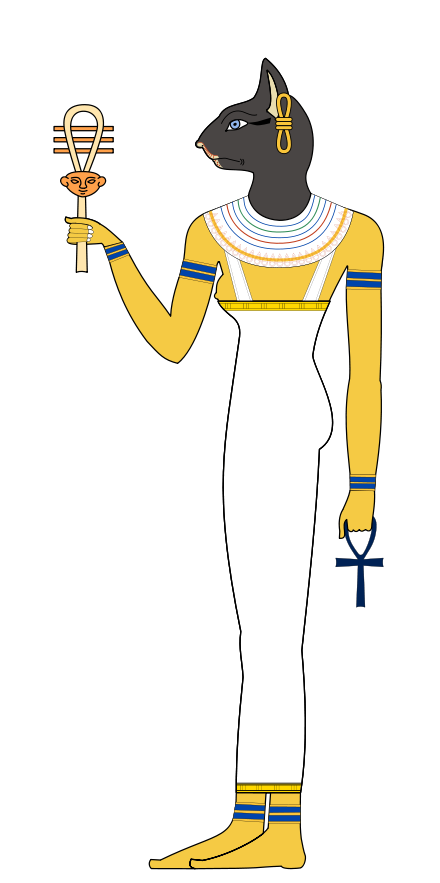
Bastet
Other names:Bast
Major cult center:Bubastis
Symbol:cat, lioness, ointment jar, sistrum, solar disk
Parents:Ra and Isis
Siblings:Horus and Anhur (half-brothers)
Consort:Ptah
Offspring:Maahes
Connection to other gods:Sekhmet, Hathor, Rāt, Tem, Artemis
Celebrations
Bubastis celebrations of Bastet 'Feast of drunkenness'
Bubasteia was celebrated by intoxication,music, debauchery, children would be born without fathers on this day.
Bastet was a goddess of ancient Egyptian religion, worshipped as early as the Second Dynasty (2890 BCE). Her name also is rendered as B'sst, Baast, Ubaste, and Baset. In ancient Greek religion, she was known as Ailuros (Koinē Greek: αἴλουρος "cat").
Bastet was worshipped in Bubastis in Lower Egypt, originally as a lioness goddess, a role shared by other deities such as Sekhmet. Eventually Bastet and Sekhmet were characterized as two aspects of the same goddess, with Sekhmet representing the powerful warrior and protector aspect and Bastet, who increasingly was depicted as a cat, representing a gentler aspect
Role In Ancient Egypt
Bastet was originally a fierce lioness warrior goddess of the sun worshipped throughout most of ancient Egyptian history, but later she became the cat goddess that is familiar today. She then was depicted as the daughter of Ra and Isis, and the consort of Ptah, with whom she had a son Maahes.
As protector of Lower Egypt, she was seen as defender of the king, and consequently of the sun god, Ra. Along with other deities such as Hathor, Sekhmet, and Isis, Bastet was associated with the Eye of Ra.She has been depicted as fighting the serpent named Apep, an enemy of Ra. In addition to her solar connections, sometimes she was called "eye of the moon".
Bastet was also a goddess of pregnancy and childbirth, possibly because of the fertility of the domestic cat.
Images of Bastet were often created from alabaster. The goddess was sometimes depicted holding a ceremonial sistrum in one hand and an aegis in the other—the aegis usually resembling a collar or gorget, embellished with a lioness head.
Bastet was also depicted as the goddess of protection against contagious diseases and malicious spirits.
History
Bastet first appears in the third millennium BCE, where she is depicted as either a fierce lioness or a woman with the head of a lioness.Two thousand years later, during the Third Intermediate Period of Egypt (c. 1070–712 BC), Bastet began to be depicted as a domestic cat or a cat-headed woman.
Scribes of the New Kingdom and later eras began referring to her with an additional feminine suffix, as Bastet. The name change is thought to have been added to emphasize pronunciation of the ending t sound, often left silent.
Cats in ancient Egypt were highly revered, partly due to their ability to combat vermin such as mice, rats (which threatened key food supplies), and snakes—especially cobras. Cats of royalty were, in some instances, known to be dressed in golden jewelry and were allowed to eat from the plates of their owners. Dennis C. Turner and Patrick Bateson estimate that during the Twenty-second Dynasty (c. 945–715 BC), Bastet worship changed from being a lioness deity into being predominantly a major cat deity.Because domestic cats tend to be tender and protective of their offspring, Bastet was also regarded as a good mother and sometimes was depicted with numerous kittens.
The native Egyptian rulers were replaced by Greeks during an occupation of Ancient Egypt in the Ptolemaic Dynasty that lasted almost 300 years. The Greeks sometimes equated Bastet with one of their goddesses, Artemis
Festival
Herodotus also relates that of the many solemn festivals held in Egypt, the most important and most popular one was that celebrated in Bubastis in honor of this goddess.Each year on the day of her festival, the town was said to have attracted some 700,000 visitors, both men and women (but not children), who arrived in numerous crowded ships. The women engaged in music, song, and dance on their way to the place. Great sacrifices were made and prodigious amounts of wine were drunk—more than was the case throughout the year.This accords well with Egyptian sources that prescribe that lioness goddesses are to be appeased with the "feasts of drunkenness".A festival of Bastet was known to be celebrated during the New Kingdom at Bubastis. The block statue from the eighteenth dynasty (c. 1380 BC) of Nefer-ka, the wab-priest of Sekhmet,provides written evidence for this. The inscription suggests that the king, Amenhotep III, was present at the event and had great offerings made to the deity.
──────⊰In Workings⊱──────
*Please know basic protections and energy work before attempting any deity work.*
*It is important to note that everyone's experiences are different and will work with spirits for different reasons. Some people may like a spirit while others will not and that's okay. Ask these spirits what they will work with you on as well as ask them if they can help you with whatever it is you need.*
Ideas for honoring or working with/worshipping Bastet
Altar
Create an altar/sacred space for your rituals and giving offerings for Bastet. Items may include
⬩An altar cloth
⬩Black or yellow candles (you can use any color)
⬩Cup or chalice
⬩Incense and an incense burner
⬩Offering bowl
⬩Statue of Bastet, cat or lion
For more information on basic deity work and altar setups check out the deity work post.
Offering items:Bread, Catnip, Fish, Frankincense, Meats, Myrrh, Perfume bottle, Sistrum, Water
Rituals
⬩Fertility rites and rituals
⬩Protection
⬩Motherhood
⬩You can ask her what she can help you with⬩
𓃠𓃠𓃠𓃠𓃠𓃠𓃠𓃠𓃠𓃠𓃠𓃠𓃠𓃠𓃠𓃠𓃠𓃠𓃠𓃠

For more content relating to other practices/religions or pantheons follow my main blog for updates or ask me anything
If you have any more questions or wish to join a community feel free to join my 18+ discord server
Ask me anything on my blog
#occult#witchcraft#witchblr#deity#neter#neteru#netjer#kemetic#kemetism#Kemetic gods#kemetic pagan#kemetic witch#kemetic paganism#kemetic polytheism#netjeru#spirit#spirits#kemetblr#occultblr#paganism#pagan#witch#Bastet#Bast#neterism
44 notes
·
View notes
Text

#all seeing eye#ancient egypt#ancient history#ancient Hemet#astrology#baphomet#black art#conspiracy#digital art#djehuti#dogon#egypt#extraterrestrials#heru#hinduism#magic#witchcraft#occultism#yoruba#yoga#tarot decks#tarot#symbolism#sumerian gods#spirituality#sons of god#neter#enter#sekhmet#sci-fi art
4 notes
·
View notes
Text
A Beginners Introduction to Medew Netcher: The Ancient Egyptian Hieroglyphic by Wudjau Men-Ib Iry-Maat

Medew Netcher is an ancient language of the gods that has been around since the time of the pharaohs. It is a combination of hieroglyphics and Medu Neter, which are two distinct writing systems used by the ancient Egyptians.
Medew Netcher is often referred to as "the language of the gods" because it was used by priests and royalty to communicate with their gods. This language has been studied for centuries and continues to be studied today. It provides us with insight into how ancient Egyptians communicated, thought, and interacted with their environment.
This guide will introduce you to Medew Netcher and provide you with a basic understanding of its structure, grammar rules, vocabulary, sentence structure, and more. With this knowledge, you will be able to read hieroglyphic texts and decode some of their meanings.
How to speak like the Gods

Pharaoh Rau Maat Ausar El YouTube
A Beginners Introduction to Medew Netcher: The Ancient Egyptian Hieroglyphic by Wudjau Men-Ib Iry-Maat
3 notes
·
View notes
